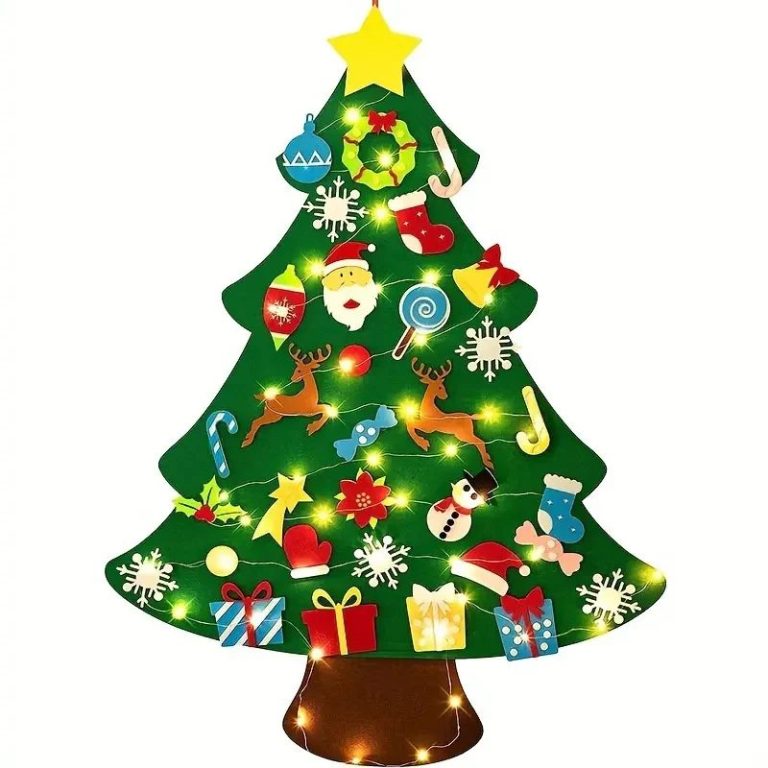The holiday season is an exciting time for families, filled with traditions, joy, and togetherness. But have you ever considered combining the festive spirit of Christmas with educational play? Enter the Montessori Christmas Tree—an interactive, hands-on way to bring a bit of Montessori philosophy into your holiday celebrations. A Montessori Christmas tree focuses on simplicity, engagement, and child-centered learning, making it perfect for toddlers and preschoolers to explore and enjoy.
Here’s how you can create your own Montessori-inspired Christmas tree, and why it’s such a valuable activity for young children.
What is a Montessori Christmas Tree?
A Montessori Christmas tree is designed with the principles of the Montessori educational approach in mind. It emphasizes independent learning, creativity, and sensory exploration. Unlike traditional Christmas trees, which are often off-limits to little hands, this tree invites your child to interact with it.
It’s typically a child-friendly, low-hanging felt tree or another safe, tactile material that children can decorate and redecorate themselves. The focus is on practical life skills and sensory activities, giving children the opportunity to use their hands, think critically, and engage in the spirit of the season in a way that is meaningful to them.
Benefits of a Montessori Christmas Tree
- Hands-On Learning
The Montessori method is rooted in hands-on learning, and a Montessori Christmas tree offers the perfect opportunity for this. Children get to use their fine motor skills as they decorate and rearrange ornaments. This act of physically placing decorations helps with hand-eye coordination, dexterity, and problem-solving skills. - Independence and Choice
Montessori education emphasizes independence and decision-making. Allowing your child to decorate their own tree gives them a sense of ownership and pride. They can choose how they want to arrange the ornaments and even change their minds later—encouraging flexibility and creativity. - Sensory Exploration
A Montessori tree often involves soft, tactile materials like felt or wood. The textures invite sensory play, which is essential for early childhood development. You can include different types of ornaments—perhaps bells that make noise, or various textures and shapes—to stimulate your child’s senses. - Practical Life Skills
Decorating the tree is a fun way for kids to practice life skills like sorting, matching, and counting. For example, they might sort ornaments by color, size, or shape, or count how many they’ve put on the tree. These simple tasks build foundational math and organizational skills in a playful environment.
How to Create Your Montessori Christmas Tree
1. Start with the Tree
You can purchase or make a felt tree, which is most commonly used for Montessori setups because it’s soft, flexible, and easy for little hands to work with. Hang the felt tree on the wall, or place it at your child’s level so they can reach it easily.
2. Create Montessori-Oriented Ornaments
The ornaments are where the magic happens. These can be anything from felt shapes and stars to wooden figures, depending on what materials you have available. Make sure they’re durable and safe for kids to handle. If you’re feeling crafty, you can involve your child in making the ornaments themselves! Cut out stars, circles, and Christmas shapes, and encourage them to decorate with buttons, ribbons, or glitter glue.
3. Incorporate Learning Opportunities
You can take the Montessori Christmas tree a step further by incorporating specific learning tools:
- Color Matching: Have felt ornaments in various colors and encourage your child to match them with different parts of the tree.
- Shape Sorting: Create ornaments in different geometric shapes and ask your child to sort them by shape or size.
- Sensory Play: Include ornaments with different textures (smooth, rough, soft, etc.) to encourage tactile exploration.
4. Add Seasonal Themes and Practical Life Elements
You can even extend the Montessori tree concept to other areas of practical life, such as learning to button, snap, or tie by adding these elements to the tree. For instance, ornaments that can be buttoned or tied onto the tree provide excellent opportunities for practicing everyday skills.
Making it a Family Tradition
One of the best things about a Montessori Christmas tree is that it can become an annual tradition. As your child grows, the tree can evolve with them. Perhaps when they are toddlers, the tree is mostly about exploring textures and shapes. As they get older, you might introduce counting games, sorting challenges, or even cultural lessons about how Christmas is celebrated in different parts of the world.
Final Thoughts
A Montessori Christmas tree is more than just a decoration—it’s an opportunity for hands-on learning and family connection during the festive season. By inviting your child to decorate their own tree, you’re encouraging creativity, independence, and a love for learning, all wrapped up in holiday cheer. Plus, it’s a wonderful way to create lasting memories while fostering developmental skills in a fun, engaging way.
